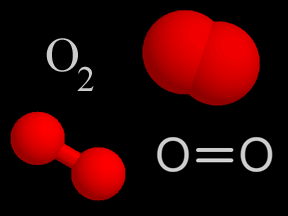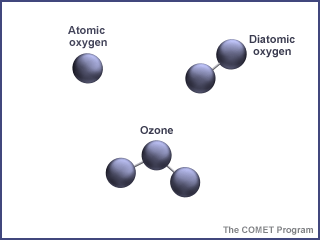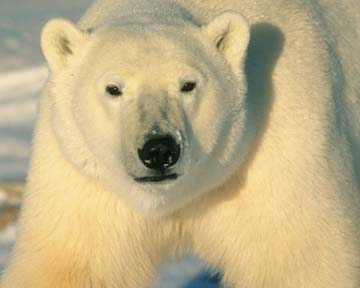Respiration occurs in this polar bear and in all other animals too.
Click on image for full size
Corel Photography
Respiration
Respiration is the name of the general process where organisms
convert sugars and oxygen into biochemical energy. The process happens
in
all organisms, including animals, plants, fungi, and bacteria. During respiration, energy is created to fuel
the different processes necessary to support life.
In addition to making useful energy, respiration makes carbon
dioxide and water as waste products.
The reverse of respiration is known
as photosynthesis. During photosynthesis, energy from the Sun's rays is
used by an
autotroph's cell to produce carbohydrates, with oxygen made as a byproduct.
You might also be interested in:

Photosynthesis is the name of the process by which autotrophs (self-feeders) convert water, carbon dioxide, and solar energy into sugars and oxygen. It is a complex chemical process by which plants and
...more
Autotrophs are organisms that can "make their own food" from an inorganic source of carbon (carbon dioxide) given a source of energy. Most autotrophs use sunlight in the process of photosynthesis to make
...more
Eventually, photosynthesis by the earliest forms of plant life (a form of life capable of feeding itself instead of feeding off of others) began to produce significant amounts of oxygen. One important
...more
About 2.5 billion years ago (BYA), after the iron in the ocean was gone to form iron ore deposits, oxygen began collecting in the atmosphere. Life took advantage of this change and developed eukaryotic
...more
Oxygen (O2) is a kind of gas. A lot of the air you breathe is oxygen. That's a good thing, since we need oxygen to stay alive! About 4/5ths of the air in Earth's atmosphere is nitrogen (N2). Almost all
...more
A large plume of nutrient-rich waters flows from the Amazon River far out into the ocean. Ajit Subramaniam, a biological oceanographer, and Doug Capone, a marine scientist, have found that microorganisms
...more
Ozone is a special kind of oxygen molecule. Normal oxygen molecules (O2), the kind we need to breathe, have two oxygen atoms. Ozone molecules (O3) have three oxygen atoms. Ozone forms when a photon of
...more















